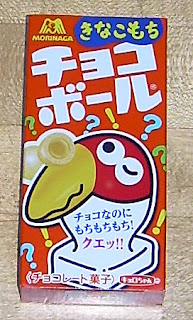You can probably tell that the one on the left is the chicken curry since there's a picture of a chicken on the package, but I'm going to tell you anyway because I'm pedantic like that.
Today's items come to you (and me) courtesy of Skoshbox. These were part of the monthly goodie box that they sent me a free sample of and reviewed last week.
When I was a kid, growing up in a run-down rural area of Western Pennsylvania, my parents used to "go out" in the only manner in which someone could in the area in which we lived. The only type of social experience that one could have there was at one of several little watering holes. There weren't any restaurants in the town, at least not at that time. You could go out and eat frozen, deep-fried food out of a plastic basket lined with paper and have a beer, you could stay home, or you could drive about a half hour to an hour away and look for something marginally better.
My sister and I were too young to go out with our parents, and I imagine it would have been a colossal bore if we had; no kid wants to sit around a dark, dank, smoky room while a bunch of men and a handful of women get either quietly or noisily drunk. The highlight of my parents going out was that they'd often placate us for sitting at home with a babysitter who we hated (and we hated all of them) by bringing back tiny bags of Wise potato chips. I remember being happy when my mother would hand over 1 oz. bags of barbecue chips, and annoyed when she'd pony up plain ones.
For me, Wise brand potato chips are indelibly linked to my childhood. It's not only because they were something that I only ate as a kid, but also that they are associated with the region I grew up in. You can't get them in California. I'm guessing that, similarly, Japanese kids might connect their youth with Yaokin's umai bo. It's a salty snack "stick" which is made of puffed corn, comes in a variety of flavors and costs about 10-20 yen a stick, depending on whether you buy them individually or as part of multi-packs.
The fact that these are designed for kids is clear based on the colorful cartoon designs on the outside as well as the fact that no calorie or nutrition data is included. Kids, after all, do not have to worry about calories, right? That doesn't mean they aren't good for adults, though. It's not like there aren't people of all ages out there who are still eating Cap'n Crunch.
Sorry for the blue cast. My photo taking situation is a bit odd at present.
Though this smelled incredibly strongly of shrimp, the actual flavor was more balanced than I expected. The mayonnaise aspect was much more present than the shrimp. It had a nice savory undertone and was ever so slightly sweet as well as salty. Even though I hate shrimp, I really didn't have a problem with this. While I wouldn't seek it out, I wouldn't turn my nose up at it either.
The chicken curry was something I was actually looking forward to as I love both flavors. Just as was the case with the shrimp mayo version, the animal product portion of this was muted next to the other flavoring. Curry is definitely the dominant flavor. In fact, this tasted very much like Japanese curry roux. That is not to be confused in any way with Indian curry, but it is a nice flavor. This has curry flavor on top with a savory undertone and a little sweetness.
The "umai bo" series of snacks is not meant for adults, but is marketed toward children. To that end, these are not snacks with serious flavor depth or intense or strong flavors. They are still very, very tasty and have a nice, almost fresh, corn flavor with good crunch. I like how airy these types of snacks are. They're giving you texture and the illusion of volume, but are not especially filling.
I like these, even the shrimp one, and I hate shrimp. This is the sort of thing which I will always associate with life in Japan and a childhood there which I didn't actually experience. They're light, tasty, crispy, and portion-controlled. They're pure junk, of course, but a little junk now and then is unlikely to send anyone to an early grave.









































